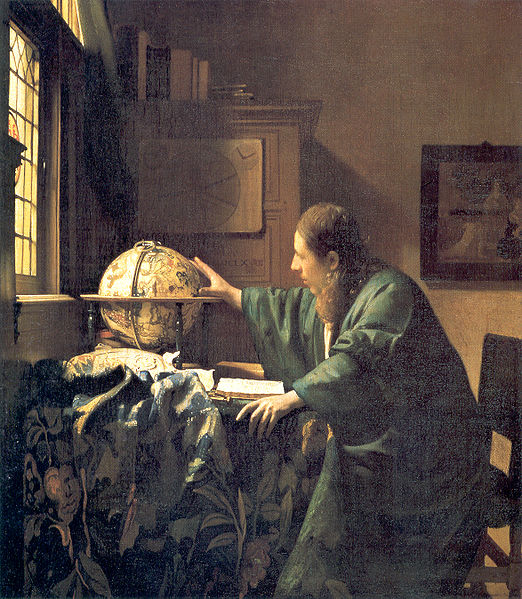I wasn’t going to post about Diego Rivera because I didn’t want to overwhelm anyone with Mexican art…But, Frida Kahlo’s work is more self-reflective and personal rather than “traditional” or “cultural”. This is where Diego Rivera comes in. A majority of his work is a representation of Mexican tradition, culture and history. He painted mainly in mural form, which were large scale depictions. He was an odd man himself, probably best known for his taste in women..but that’s another story. The most interesting fact about Rivera, to me at least, was the fact that he was an atheist. He expressed this belief, or lack thereof in this painting: 
Titled Dreams of a Sunday in the Alameda (1947), looking at it you are probably wondering how this is in any way shape or form a painting of a rabid atheist. Well, it features Ignacio Ramirez, who was the Mexican version of Voltaire. He was a writer, a poet and political critic who wrote many pieces that criticized the state of affairs in Mexico. Anyway, in the original mural, he was holding a sign that stated “God does not exist”. Oh yes, he was also an atheist. The mural was not shown for 9 years because Rivera did not want to remove the sign. After he did, he stated: “To affirm “God does not exist”, I do not have to hide behind Don Ignacio Ramírez; I am an atheist and I consider religions to be a form of collective neurosis. I am not an enemy of the Catholics, as I am not an enemy of the tuberculars, the myopic or the paralytics; you cannot be an enemy of the sick, only their good friend in order to help them cure themselves”. This mural is interesting to me because it portrays the history of Mexican culture and tradition, and features such an iconic figure, but censors his real belief about God.
The mural is set as a walk through Alameda Park in Mexico City, the first park built on remains of ancient Aztec grounds. From left to right the theme is: The Conquest, The Porfiriato Dictatorship and the Revolution of 1910. And in the middle (stay with me…) is young Diego Rivera being led by Dame Catrina who is accompanied by Jose Guadalupe Posada. And behind them is Frida Kahlo resting her hand on Rivera’s shoulder while holding the Ying-Yang symbol.
That was a lot to take in so here is a run down of the significance of these characters.
“Posada was highly respected by Rivera, who claimed him as one his artistic luminaries and teachers. Posada’s narrative style was an extremely influential model for Rivera’s mural painting. ”
“Calavera Catrina, a symbol of the urban bourgeoisie at the turn of the nineteenth century must be taken here as an allusion to the Aztec Earth Mother Coatlicue, who is frequently represented with a skull. Coatlicue wears the plumed serpent, symbolic of her son Quertzalcoatl, around her neck as a boa. Her belt-buckle displays the Aztec astrological sign of Ollin, symbolizing perpetual motion.” By all means, do click on the blue links for more information about these Aztec figures.
So as you can see, he was a very complex artist. I think that his beliefs about the world and God made him a very unique artist in that it gave him a much different perspective on things, which in turn influenced his paintings. To further demonstrate this I included this painting: (In full size for maximum detail -it’s great, just look at it!)

The paiting is called El Hombre en la encrucijada (1934) (Man, controller of the Universe). I don’t even know where to begin with this one. This is probably my favorite work by Rivera not only because it sings, not speaks, to my inner science geek but also because I think it is a true representation about how Rivera viewed the world. You can see in this work numerous examples of scientific illustrations. The man in the center is holding a controller and there is an orb which depicts the stages of cell reproduction, there is a microscope with illustrations of cells and bacteria, there are depictions of galaxies and stars and crops such as wheat and corn. There is a lot here to interpret, so you can draw your own conclusions about what the painting is trying to convey.
Diego Rivera
<http://en.wikipedia.org/wiki/Diego_Rivera#cite_note-20>
Man, Controller of the Universe
<http://upload.wikimedia.org/wikipedia/commons/9/94/Palacio_de_Bellas_Artes_-_Mural_El_Hombre_in_cruce_de_caminos_Rivera_3.jpg>
Dreams of a Sunday in the Alameda
<http://1.bp.blogspot.com/_K5IV6OxZSHI/TE0NLi13LRI/AAAAAAAAADY
iiyAftx6rWc/s1600/alamedalg.jpg>


 Without Hope (Sin Esperanza), painted in 1945. This was a painting she did while she was recovering from the accident. My guess is that the stuff coming out of her mouth is her stomach contents. She could have been trying to portray that she was vomiting a lot or not eating and the skull representing possible death.
Without Hope (Sin Esperanza), painted in 1945. This was a painting she did while she was recovering from the accident. My guess is that the stuff coming out of her mouth is her stomach contents. She could have been trying to portray that she was vomiting a lot or not eating and the skull representing possible death.






















